Yankees Brian Cashman will craft his final legacy today

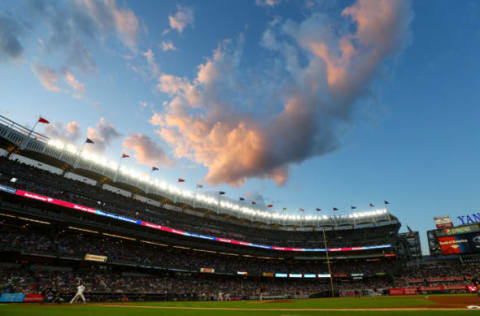
The Yankees GM will make decisions today that will affect the organization for years to come, and form the final verdict on a long career. And that’s exactly how Brian Cashman wants it.
Yankees players aren’t the only ones with legacies. GM’s and owners have them, too. When you spend $100,000 to take the best player in the history of the sport away from your division rival, you leave a great legacy. Trade Jay Buhner for Ken Phelps and they write incredulous articles consigning you to ignominy; rightly so.
Cashman knows that. He understands legacy all too well and has bristled for some time that his was seemingly written long ago. His frustration almost caused him to leave the Yankees in 2005. But it was that same frustration that caused him to stay and led him to this moment in time.
Going for the Title
Not all titles, you see, are equal. Cash has been the Yankees General Manager since 1998, but that doesn’t mean he ran the whole organization. His power was restricted to exclude much of the evaluating, drafting, and trading of young Yankees talent. And he was often overruled on free agents by everyone from scouts to agents, as Sports Illustrated once pointed out:
But by early 2005, Cashman was again getting overruled on free agents; everybody from the scouting director to agent Scott Boras to Steinbrenner’s pals seemed to have a hand on the 25-man roster.
Adding to the internal issues was that the team he took over was already built and highly successful. But that success had been as much a curse as a blessing, for it boxed Cashman in. With proven championship caliber players, the wise move was to continually restock the team with free agents.
Those were the real days of trying to win the World Series every year.
That made it seem to all the world as if Cash was only talented enough to buy the best players. It didn’t matter that he was not allowed to grow prospects and trade big stars. Or that Brian was spending like a rich man in plain sight, but acting more as a mendicant behind closed doors.
And what he was begging for was to create a younger team with greater payroll flexibility. No one knew that. So, the consensus was clear: Cashman had an easy job because anyone could be successful with Steinbrenners seemingly limitless checkbook.
He knew that, until he had complete organizational control, he could never craft his true narrative.
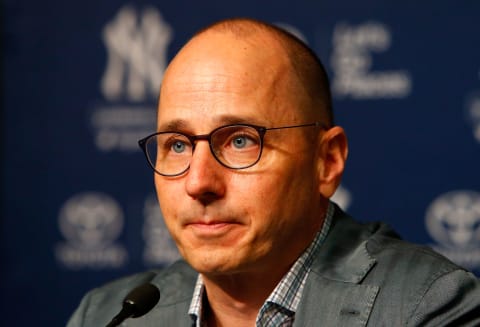
Peer Review
So in 2005, Cashman demanded all of the powers GM’s usually have, that his peers had, or he would take his talents elsewhere, as he made clear to Tyler Kepner and the NY Times in 2005:
Cashman was referring to Steinbrenner’s lieutenants in Tampa, whose suggestions often led to roster moves that undermined Cashman’s authority. Privately, Cashman longed for the chance to have as much autonomy as his peers, which is why he nearly left the only organization he has known. “It took as long as it did for a reason,” said Cashman, whose current contract would have expired Monday. “My preference was to stay, but I was prepared to go if I had to.
Wisely, the Steinbrenners agreed. I remember the day he famously said he re-signed in order to change the story of Brian Cashman, GM.
But Just One Title
A lot of lines have been written in that book since that fateful day in 2005. Most of them have been about free agent deals made to support proven, but aging, players. The 2009 Championship makes it a hard strategy to argue with. But even during these years, with increased power, not all the sentences were written by Brian.
Of those, there are two that perhaps most bother Brian. One is Hal Steinbrenner’s decision to re-sign Alex Rodriguez. Cash was solidly against giving a player in his mid-30’s a ten-year deal, partially because it kept the emphasis on supporting an aging team instead of building a new, younger dynasty with payroll flexibility:
Cashman didn’t want A-Rod back. When Rodriguez famously opted out of his 10-year contract during the 2007 playoffs, Cashman argued hard against the new 10-year, $275 million deal: A-Rod’s insecurities had become a headache, and would only be more of a burden without Texas covering $67 million of his contract. In what became the biggest, most crippling transaction of the post-Boss era—deteriorating health led Steinbrenner to cede control to his sons in ’10—Rodriguez’s star power proved too much for the Yankees and their YES Network to resist. “The guy that made that decision,” says managing general partner Hal Steinbrenner, “is me.”
Coming in Second with Cano
And the other is Hal’s refusal to trade Robinson Cano in the middle of the 2013 season. Brian had correctly predicted that Cano would not re-sign with the club and that this was the perfect time to start a rebuild with youth:
“We should trade Cano before he’s a free agent, because he will not re-sign with us,” Cashman said, repeating the recommendation he made at the time. “They’re looking at money we won’t be willing to commit. They’re looking for a 10-year deal.” How much could the Yankees have benefited by trading Cano instead of losing him as a free agent? Cashman never found out, because he was told not to put Cano on the market. The 2013 Yankees failed in their push for the playoffs, finishing 85-77, six games out of a wild-card spot.
As much as the fans appreciate a win-it-all-now mentality, last year proved they have an equal affinity for smart baseball decisions. What Cash did last year at the trade deadline, which led to the current rebuild, he wanted to start four years ago.
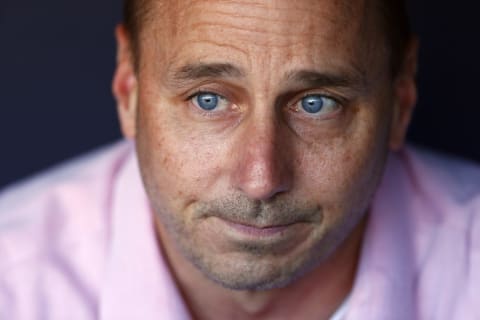
Dreams do Come True; It can Happen to You
The Yankees 27th WS banner makes the A-Rod decision difficult to evaluate. They won a World Series, but the team is still paying for it. Alex will get 21 million not to play this year; when GM’s worry about the back-end of a contract for aging players, this is what they mean.
But there’s no disputing Cash was dead on with Robbie.
And he was dead on last year when he traded current big league stars for future ones. To understand just how much he relished being in that position, let’s take the word of the one who knows Brian Cashman best: Brian Cashman. Here he was talking to New York Magazine back in 2004:
“To be the guy who everyone else is calling, trying to trade for your one star, and having a choice of prospects to put a new team together . . . ,” Cashman says, stretching his hands out toward the Yankee Stadium infield, as if trying to hug a dream. “Yeah, I’d like to try that.
When that day finally arrived one year ago, it was a day he long looked forward to. It allowed him to start part one of his final chapter as Yankees GM, The Tear Down.
Today, twelve months later, he will start writing part two, Rebuilding a Champion. It’s the culmination of a dream long sought. Cashman stares now at not just crafting his destiny, but that of the Yankees for years to come.
That does not mean it will be easy. Cash has several difficult, in some cases unknowable, questions. And he has to answer all of them correctly.
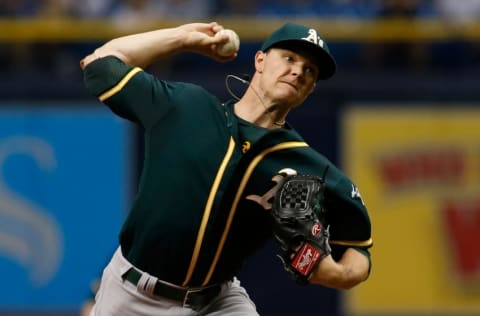
One: Will adding either Sonny Gray or Yu Darvish make the Yankees a real World Series contender this year?
Cash must believe, as most do, that adding either pitcher would all but ensure the Yankees make the playoffs. And once a team is in the tournament, anything can happen. Still, it’s difficult to know if that makes them better than the Astros in the AL, or the Dodgers and Nationals in the NL.
But it could. Luis Severino has already shown himself the equal of any other ace in baseball, perhaps save Scherzer or Kershaw. Masahiro Tanaka has shown the same in his inconsistent season. Jaime Garcia has post season experience, and success, albeit in the lighter hitting National League. And Yu Darvish is an unqualified true ace.
Sonny Gray, meanwhile, has pitched to a 1.37 ERA in his last six starts and is at 3.43 for the season. Winning a title is as much about timing as anything. If Gray is going to continue to pitch like this for the rest of the year, or Cashman pivots to Darvish, the Yankees would have three or four pitchers who could beat any line-up in any series.
All of that is possible. If it doesn’t work, it won’t be Cash’s fault. But it will read that way in his Yankees epitaph.
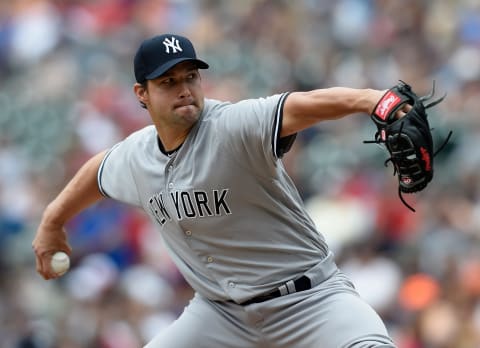
Two: What will it cost? And what will be the impact on the organization’s depth?
So far, Cashman has made smart, necessary trades. Garret Cooper is needed to complete the first base platoon with Headley, who can’t hit lefties anymore. Losing Blake Rutherford hurt, but they cannot keep all of their outfielders, and the bullpen seems solid through next year; Tommy Kahnle will be under control until 2020.
Also, a great depth of talent means a crowded 40-man roster. And no one wants another Luis Torrens situation. So trading Dietrich Enns and Zack Littell—two promising but not blue chip minor league players who would have to be protected—for a solid number four makes sense. The 2017 New York Yankees got a lot better, and two roster spots were opened up.
But Gray looks to cost the team considerable talent. Here is where Cashman’s final legacy will have some of its most important lines written.
And to do so correctly, he has to start by guessing who will become the next great player, and who the next Austin Jackson. Jorge Mateo has all the talent; will his attitude and approach at the plate continue to sink him? Or will he rise? And what about Estevan Florial. He might figure large into the Yankees future.
At least if history is any guide.
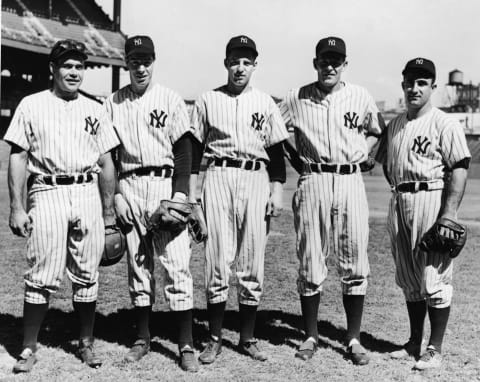
The Championship Blueprint
A while ago I wrote a piece that tangentially touched upon previous Yankees dynasties. What I found was that all of them replaced players during their glory days, often significant players, to sustain long championship runs. You can read about the late-30’s and early-50’s dynasties here.
The same was true for the most recent team that went to six World Series in eight years, winning four of them, from ’96 to 2003.
The ’96 Yankees started Wade Boggs at third and Mariano Duncan at second, while Jimmy Key and Kenny Rogers were central parts of the rotation. Gerald Williams was the third most used outfielder.
By 1998, Chuck Knoblauch was at second, Scott Brosius manned third, and Chad Curtis was the third most used outfielder. Key and Rogers were gone, replaced by David Wells and Orlando “El Duque” Hernandez.
And by 2003, Alfonso Soriano had come up to play second while Robin Ventura held third. Roger Clemens and Mike Mussina were already long-time parts of the rotation; Raul Mondesi and Hideki Matsui now played the corner outfield spots.
There have been no long run of World Series appearances and championships without personnel changes. I could have said specifically Yankees dynasties, but that would be redundant. The longest runs have all been accomplished by Yankees teams. That all adds up to…
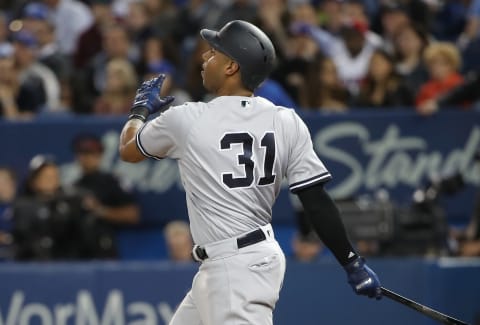
Mirror, Mirror on the Wall
…that this team will someday need replacements. Take center field. Even if Aaron Hicks is exactly what he has looked like so far this season, he is a free agent in 2020. The Yankees will either have to pay him or someone of equal talent, from the free agent market.
Unless they have a home grown replacement ready to go, which would be preferable.
Especially because most GM’s would like to save their money for pitching, Cashman is no different. And Rutherford is already gone, and profiles as a corner outfielder anyway. So what will the answer be when it is eventually asked?
Is Dustin Fowler the answer? Is he as good as he looked at Triple-A? Because if Cashman trades Florial, he is declaring Fowler, the fielder of the future.
Florial, though, is a better choice. He is younger, not even needing to be on the 40-man this off-season, and therefore has a lot more years under control than even Fowler. And the full-time job doesn’t open up for two more seasons beyond this one.
Even if their talent is equal, Florial’s age puts him in the right spot; timing is everything in baseball. He projects to be ready for the Bronx in 2019 or ’20.
After Florial, there is no true centerfielder anywhere in the Yankees top 30 prospects. If Cashman is serious about shooting for multiple championships, he might need Estevan, and others. But if he thinks it is worth it to go all in on Gray, he will drain the system more than you realize.
That means the Yankees Have to Win Now
It seems likely that the Yankees will have to part with three or four prospects to get Gray. Right now that might mean Florial (5), Mateo (8), Domingo Acevedo (10) and possibly James Kaprielian (12). If so, take a look at what that does to the future of the farm.
First, that would take four of the Yankees top 12 prospects, who are also the future replacements. Clint Frazier is a now player, clearly, and it’s likely that Gleyber Torres starts in the 2018 Yankees infield.
The replacement depth gets iffy after that. Chance Adams (3) looks great to most of us, but the Yankees are not sold. Dustin Fowler (4) might have permanently put it all together but is unproven and currently injured; ditto Justus Sheffield (6).
Tyler Wade (7) has not shown yet he can hit at the major league level, and Andujar (9) is another now player, again, unproven but promising.
Most of the rest of the prospects after those are pitchers, and pitchers are notoriously difficult to predict. So, where are the replacement position players going to come from, when Didi or Starlin become free agents? Who replaces Hicks and Gardner over the next two years? And who will be left to trade if needs arise?
Yes, there will be players on the free agent market, but Cashman will want to load up on new starting pitchers. For example, Jaime Garcia, CC Sabathia, and Michael Pineda all have to be replaced next year.
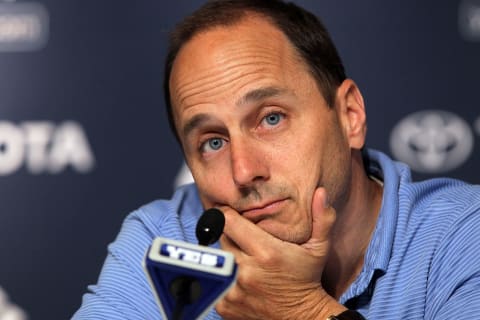
Three: Cash has to guess who is starting at least a short career, and who is having a few good months.
This is one of those unknowable questions, but it will impact Brian’s legacy just the same. What if Fowler never develops consistent power? Is Jake Cave breaking out? Or Billy McKinney? Estevan is only at Single-A; that gives him three possible levels to get to, any one of which might make him the poster boy for the Peter Principle.
And that does not include all the pitchers. Domingo Acevedo and Jorge Guzman both throw in the triple digits. So, who will be the next great starting pitcher, if either, and who will work out of the bullpen? Cash needs to think about it and trade the bullpen guy.
Justus Sheffield, Albert Abreu, and James Kaprielian are all in the top 12. And they’re all currently injured. Which one(s) will be going on to a big league career, and which will prove to have chronic, career ending injuries? It’s a coin toss that will reflect on Cashman long after we forget if it was heads or tails.
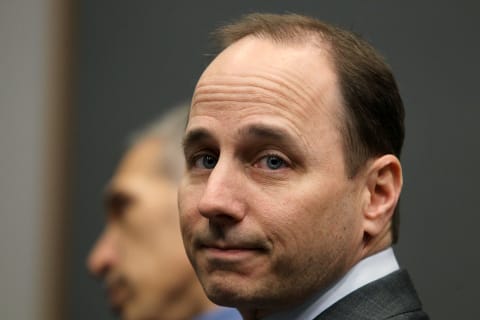
Four: Should he do anything he can to win now and through the 2019 season, or should he let this year play out so that he can keep as much of the future as possible?
More from Yanks Go Yard
- Predicting Yankees-Diamondbacks LF trade package after Ken Rosenthal update
- Yankees add to championship core with Wilmer Difo signing
- Aaron Judge’s ‘breadcrumbs’ showed he was never leaving Yankees, has more moves in mind
- Creating a Yankees-Bryan Reynolds trade package after latest Pirates update
- Yankees analyst Cameron Maybin projects surprise landing spot for Gary Sánchez
That’s a tough one. What if Gary Sanchez gets hurt in 2020 and never fully recovers? Is Clint Frazier just having a great three weeks? How many pitchers currently on the roster will be lost to Tommy John, and in which years?
Perhaps the Yankees farm will produce enough pitching over the next two years that Cashman could afford two more bats in free agency in 2020. He did just that when he added Mark Teixeira and Nick Swisher before the 2009 season. And it’s all completely unpredictable.
One thing is certain; there can be no run of championships without getting the first one. But at what cost? If the Yankees drained their system, even beyond what was predicted here, but won the next two World Series, would that be worth it? Or are the Yankees victims of their success and only three to five championships over the next ten years will be considered worth the cost?
And He Knows It
Only Brian Cashman knows. He will soon make his feelings and insights clear. And his actions will reverberate throughout the Yankees universe for years to come, affecting their payroll, farm system, his ability to make future trades, and the team’s competitive edge
This day will be the first day of Cashman’s final chapter as Yankees GM. I say final because, by the time this team is ready to be completely turned over again in ten to fifteen years, it is doubtful Cash will still be making the decisions.
Next: Let's Hope Cash and the Yankees have learned the Mateo Rule
So make no mistake about it: Today, Brian Cashman will either build an empire or compromise one. And it’s success now and over the next decade will decide the final verdict on Brian Cashman, Yankees GM. That’s a hell of a day.
It’s one that Cash has been looking forward to with great anticipation and great pleasure. Let’s hope he looks back on it in ten years with that same pleasure. And that the final chapter of his book reads, He Saved the Best for Last.
As always, I invite you to share your thoughts and comments about this story or anything Yankees on the Yanks Go Yard Facebook page.